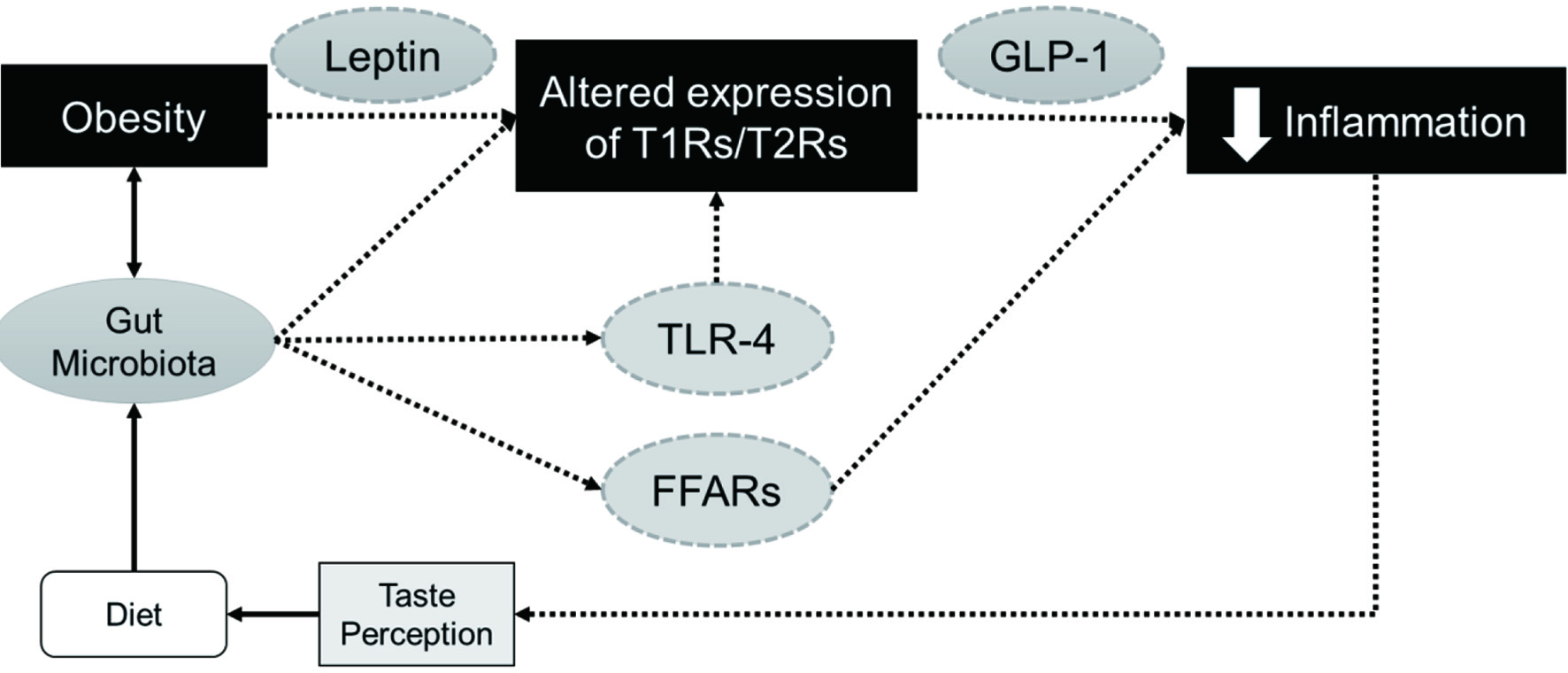
Figure 1. Potential regulatory role of T1Rs and T2Rs in obesity-induced inflammation. T1Rs and T2Rs can modulate the secretion of GLP-1, a potential anti-inflammatory agent, and work in conjunction with leptin or other gut peptides to regulate food intake and host metabolism. Obesity can also alter gut microbiome, which could impact the expression of taste receptors directly or via TLR4 attenuation to inhibit subsequent inflammatory responses. Another putative mechanism might involve the activation of FFARs upon binding to short chain fatty acids resulting from microbial fermentation of dietary fiber.